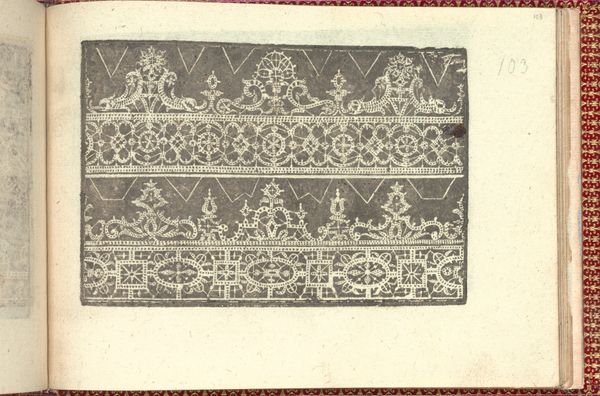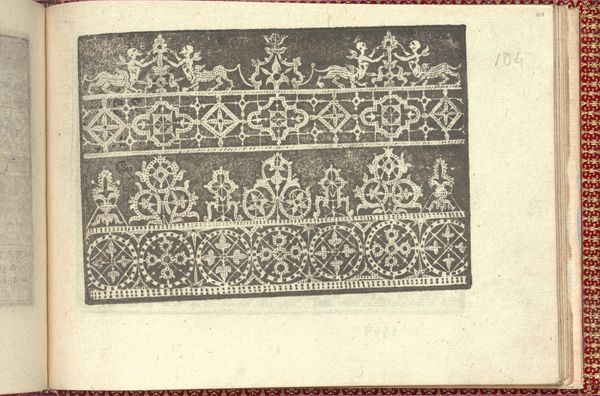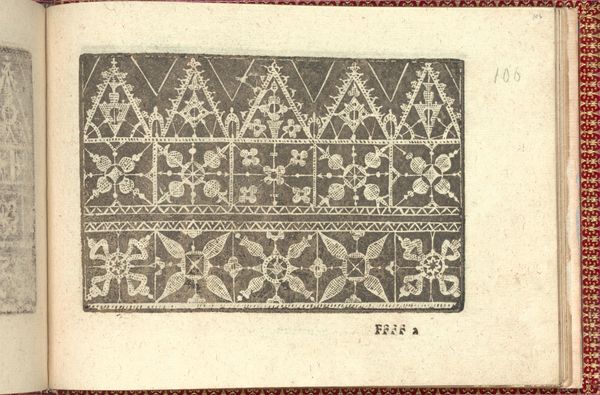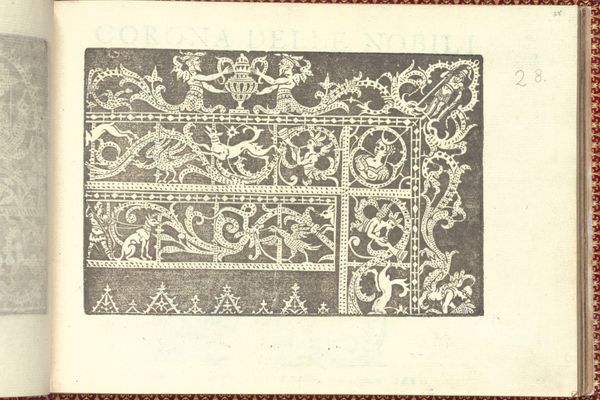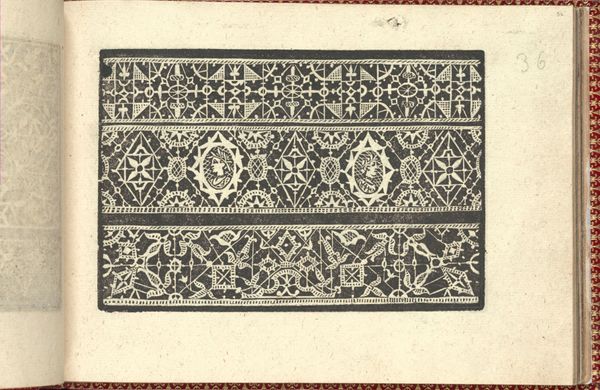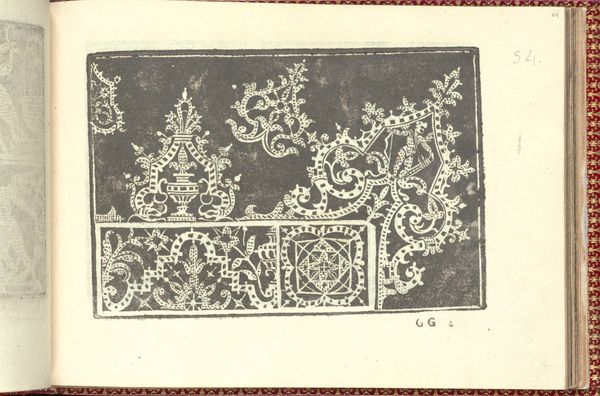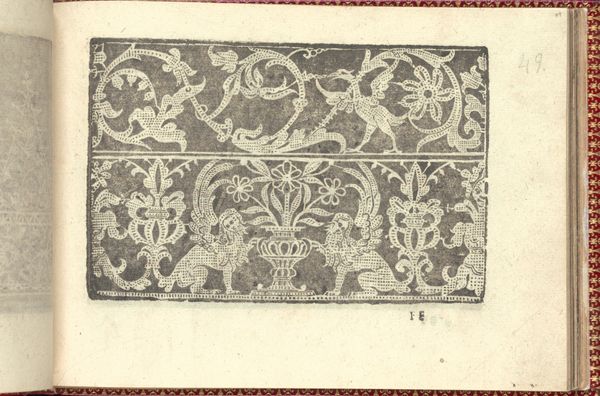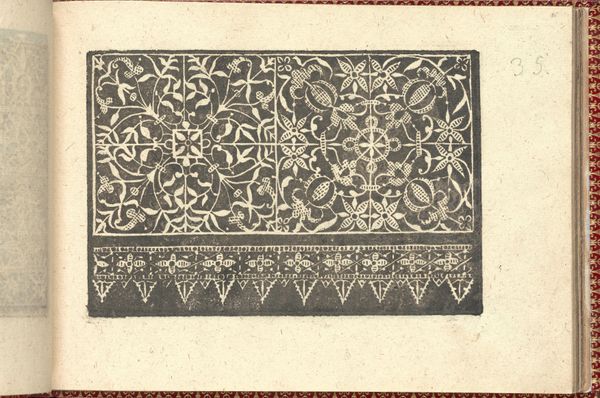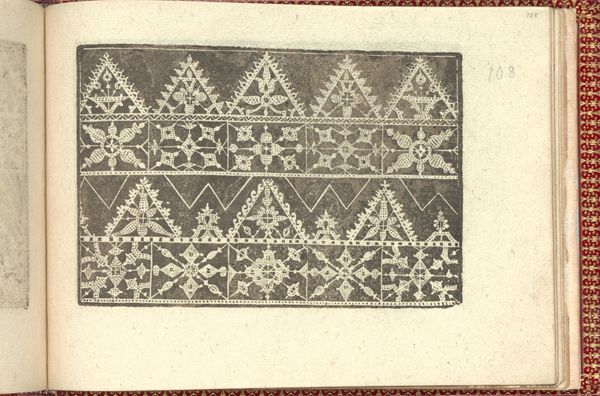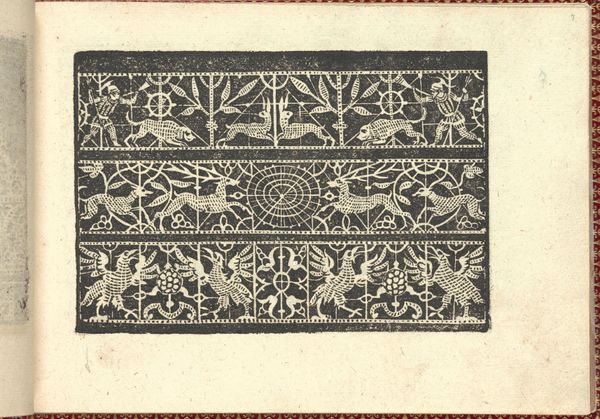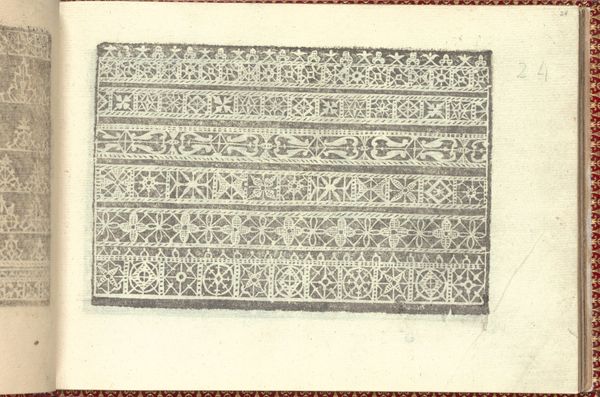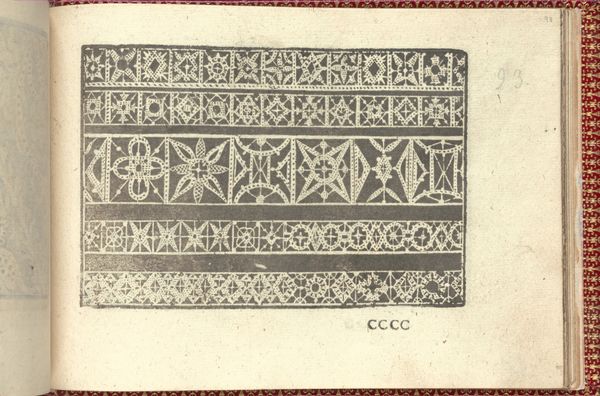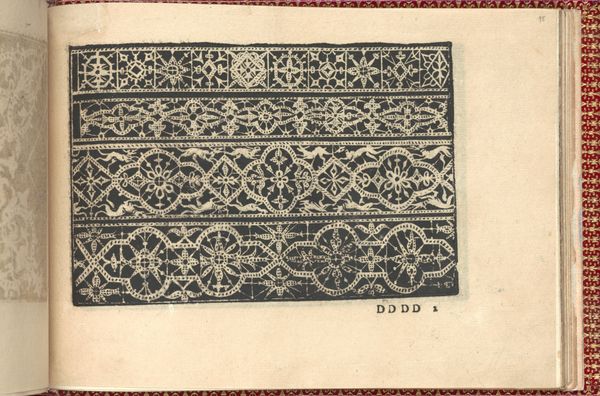
Corona delle Nobili et Virtuose Donne: Libro I-IV, page 102 (recto) 1601
0:00
0:00
drawing, ornament, print, intaglio, engraving
#
drawing
#
ornament
# print
#
book
#
intaglio
#
men
#
italian-renaissance
#
italy
#
engraving
Dimensions: Overall: 5 1/2 x 7 11/16 in. (14 x 19.5 cm)
Copyright: Public Domain
Curator: I’m drawn to the intricacy of this page, number 102 recto, from Cesare Vecellio’s “Corona delle Nobili et Virtuose Donne: Libro I-IV,” dating back to 1601. It's currently held at the Metropolitan Museum of Art. Editor: My first impression is of controlled abundance. It feels meticulously crafted. What material is it? Curator: This artwork combines printmaking methods; it includes engraving and intaglio on paper. As an image it speaks to design more broadly, since these patterns could be used for textiles or other material surfaces. Editor: Absolutely. Thinking about the process of its creation, this requires significant skill. Each line precisely cut and etched. It makes me think about craft traditions—how skills were taught, labor divided. Was this image meant for practical use? Curator: In its era, it functioned as a pattern book, specifically offering templates and ideas for lacemakers and embroiderers, providing endless visual possibilities. In particular it reflects that cultural obsession in Renaissance Italy to define, catalogue, and even standardize its social structures, including womanhood. Editor: The symbolism! Looking closer, there are fantastical creatures and stylized floral elements—the images are dense and highly patterned. It does feel very prescriptive; offering not just aesthetic patterns but also perhaps social norms to adhere to. Curator: Indeed, the book's title itself highlights an idealized view of noble and virtuous women, linking visual design to the aspirations of women. Those repeated motifs evoke stability, and also social repetition. Editor: So much work went into the plates. Were these designs widely adopted and replicated across different kinds of textiles or other decorative objects, I wonder? And what were the different stages of production, what were the costs, and where these readily available? Curator: Those are important material and production questions, about dissemination of design, that give vital contexts about value. To come full circle, returning to those symbols…it does reinforce the period’s emphasis on both societal and individual roles—virtue, skill, and class all being subtly interwoven here. Editor: Thinking about the original users and viewers makes these decorative patterns truly speak volumes. Curator: Exactly, examining both form and meaning helps reveal even deeper meanings, connecting images with cultural ideals.
Comments
No comments
Be the first to comment and join the conversation on the ultimate creative platform.
